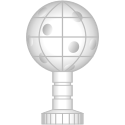Puchar Świata w skokach narciarskich 1984/1985
| |||
| Data | 8 grudnia 1984 – 24 marca 1985 | ||
|---|---|---|---|
| Miejsce rozpoczęcia | |||
| Miejsce zakończenia | |||
| Organizator | |||
| Liczba konkurencji | 21 | ||
| Zwycięzcy | |||
| Klasyfikacja generalna | |||
| Loty | |||
| Turniej Czterech Skoczni | |||
| Puchar Narodów | |||
Pucharu Świata w skokach narciarskich 1984/1985 – 6. edycja Pucharu Świata mężczyzn w skokach narciarskich, która rozpoczęła się 8 grudnia 1984 w Thunder Bay, a zakończyła 24 marca 1985 w Szczyrbskim Jeziorze.
Zwycięzcy
 Matti Nykänen
Matti Nykänen
zwycięzca klasyfikacji generalnej Pucharu ŚwiataJens Weißflog
zwycięzca 33. Turnieju Czterech Skoczni oraz zwycięzca Turnieju Szwajcarskiego 1985Reprezentacja Finlandii
zwycięzca klasyfikacji generalnej Pucharu Narodów
Kalendarz i wyniki
Klasyfikacje
Klasyfikacja indywidualna
| Źródło[2] | |||
|---|---|---|---|
| Miejsce | Zawodnik | Punkty | |
| 1. | 224 | ||
| 2. | 198 | ||
| 3. | 176 | ||
| 4. | 151 | ||
| 5. | 139 | ||
| 6. | 125 | ||
| 7. | 117 | ||
| 8. | 89 | ||
| 9. | 88 | ||
| 10. | 86 | ||
| 86 | |||
| ... | |||
Klasyfikacja drużynowa
| Źródło[3] | |||
|---|---|---|---|
| Miejsce | Reprezentacja | Punkty | |
| 1. | 577 | ||
| 2. | 562 | ||
| 3. | 417 | ||
| 4. | 400 | ||
| 5. | 271 | ||
| 6. | 164 | ||
| 7. | 126 | ||
| 8. | 100 | ||
| 9. | 87 | ||
| 10. | 84 | ||
| 11. | 83 | ||
| 12. | 23 | ||
| 13. | 6 | ||
| 14. | 4 | ||
| 4 | |||
Przypisy
- ↑ a b Konkurs odwołany z powodu niekorzystnych warunków atmosferycznych.
- ↑ Klasyfikacja Pucharu Świata w sezonie 1984/1985. skijumping.pl. [dostęp 2022-09-04].
- ↑ Klasyfikacja Pucharu Narodów w sezonie 1984/1985. skijumping.pl. [dostęp 2022-09-04].
Bibliografia
- Calendar & Results. fis-ski.com. [dostęp 2022-09-04]. (ang.).
- Puchar Świata 1984/1985. skokinarciarskie.pl. [dostęp 2022-09-04].
Media użyte na tej stronie
Autor: Iivq - Tijmen Stam, Licencja: CC-BY-SA-3.0
Differenty colored cycling jerseys as used in different cycling contests yellow jersey. Used by:
- Overall leader in Tour de France
- Overall leader in Tour de Suisse
- Youth leader in Eneco Pro Tour
- Overall leader in Tour de Pologne
Pictograms of Olympic sports - Ski jumping
Autor: https://phabricator.wikimedia.org/diffusion/GOJU/browse/master/AUTHORS.txt, Licencja: MIT
An icon from the OOjs UI MediaWiki lib.
Autor: https://phabricator.wikimedia.org/diffusion/GOJU/browse/master/AUTHORS.txt, Licencja: MIT
An icon from the OOjs UI MediaWiki lib.
Flaga Finlandii
Flag of Canada introduced in 1965, using Pantone colors. This design replaced the Canadian Red Ensign design.
The flag of Navassa Island is simply the United States flag. It does not have a "local" flag or "unofficial" flag; it is an uninhabited island. The version with a profile view was based on Flags of the World and as a fictional design has no status warranting a place on any Wiki. It was made up by a random person with no connection to the island, it has never flown on the island, and it has never received any sort of recognition or validation by any authority. The person quoted on that page has no authority to bestow a flag, "unofficial" or otherwise, on the island.
Flag of the Socialist Federal Republic of Yugoslavia (1946-1992).
The design (blazon) is defined in Article 4 of the Constitution for the Republic of Yugoslavia (1946). [1]
Flag of the Socialist Federal Republic of Yugoslavia (1946-1992).
The design (blazon) is defined in Article 4 of the Constitution for the Republic of Yugoslavia (1946). [1]
Autor: Jakke Nikkarinen / Suomen Moneta, Licencja: CC BY 3.0
Finnish former ski jumper Matti Nykänen.
Autor: Christian Bier, Licencja: CC BY-SA 4.0
FIS Ski Jumping Summer Grand Prix Klingenthal 2017 on 2017-10-03 Jens Weißflog


























